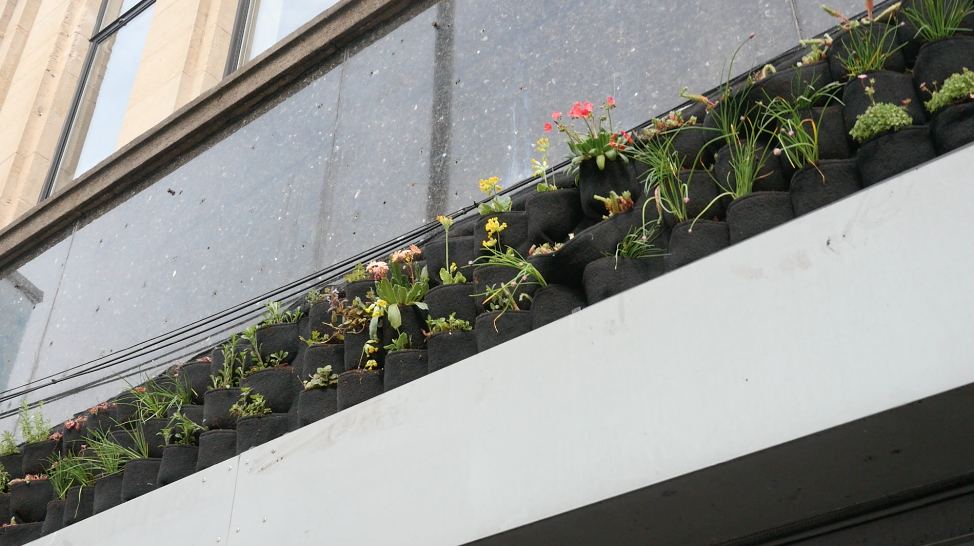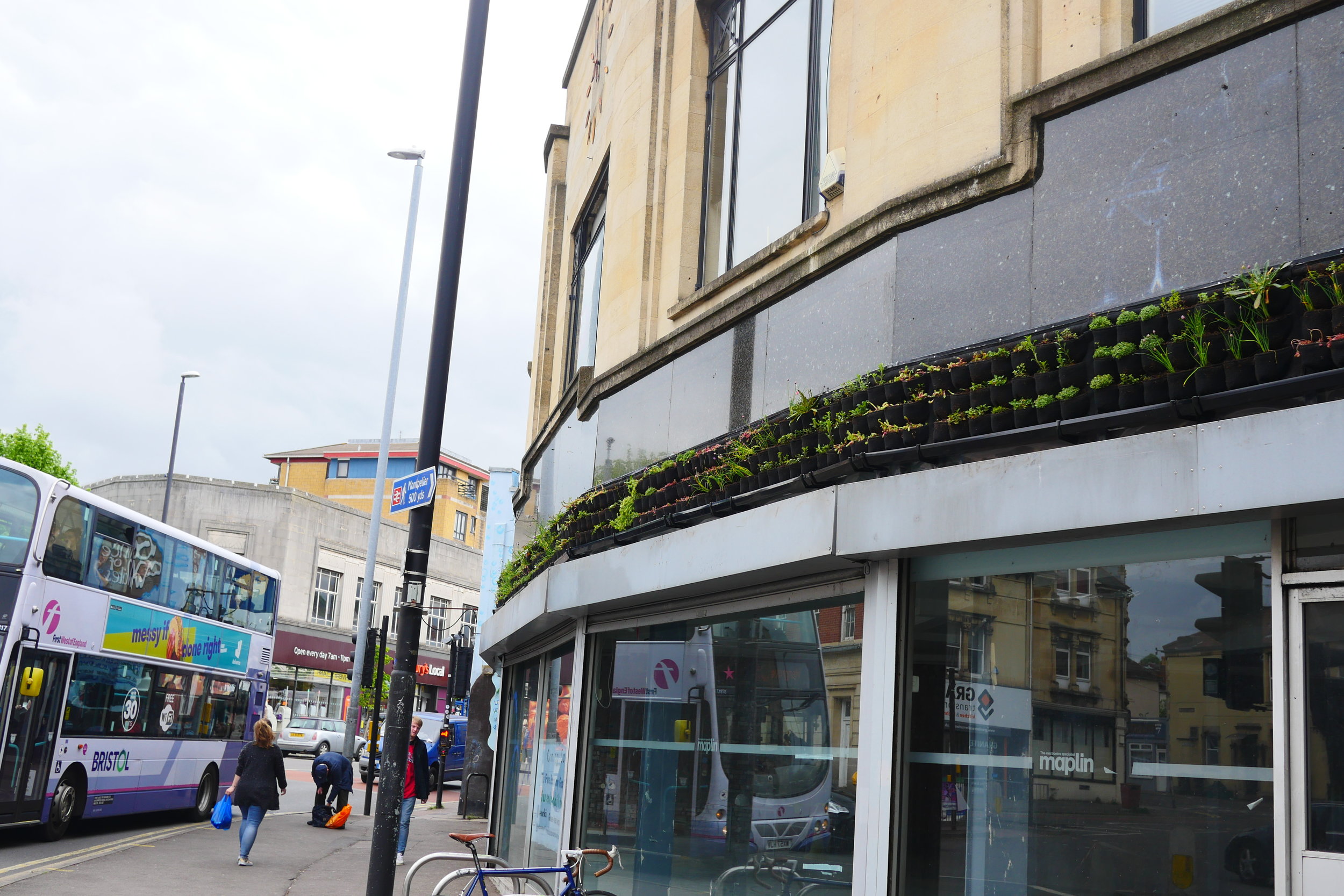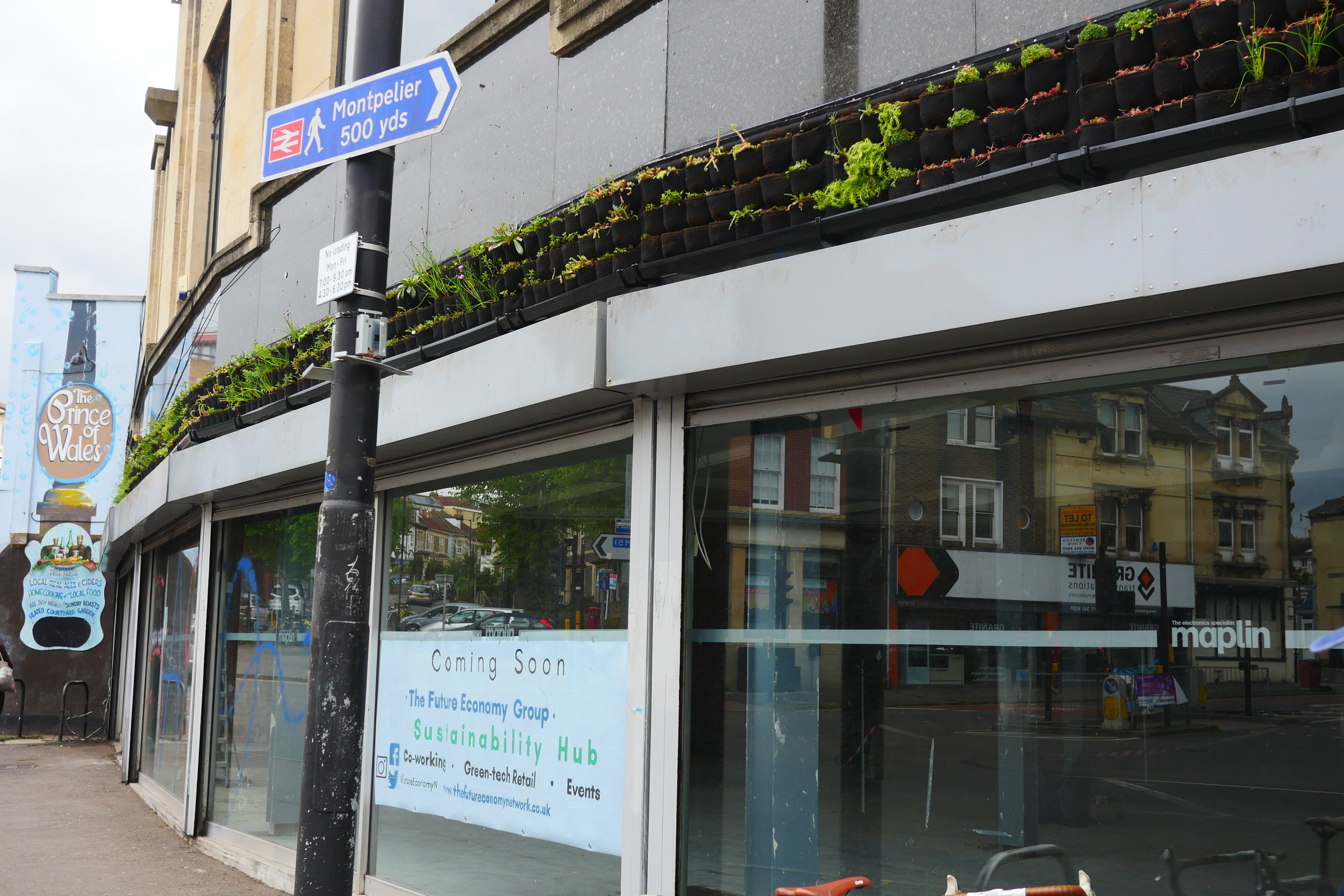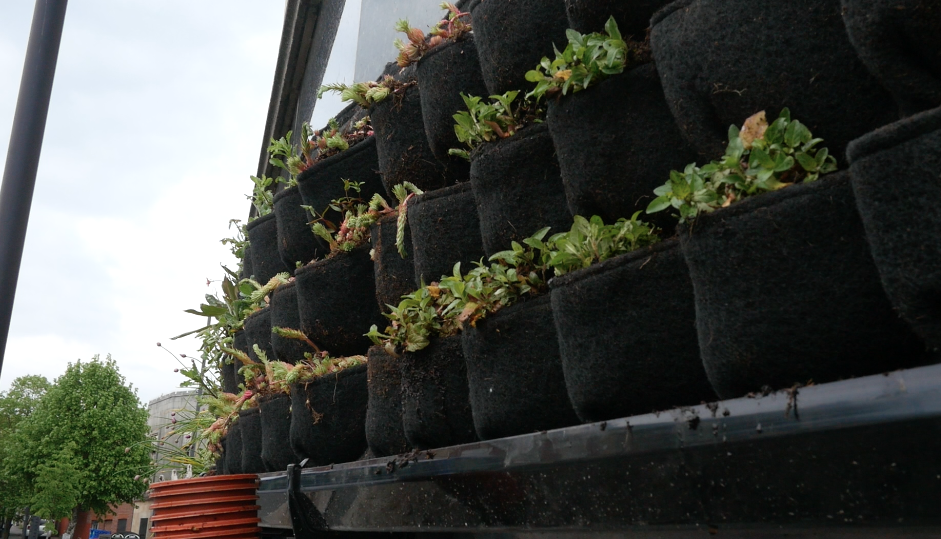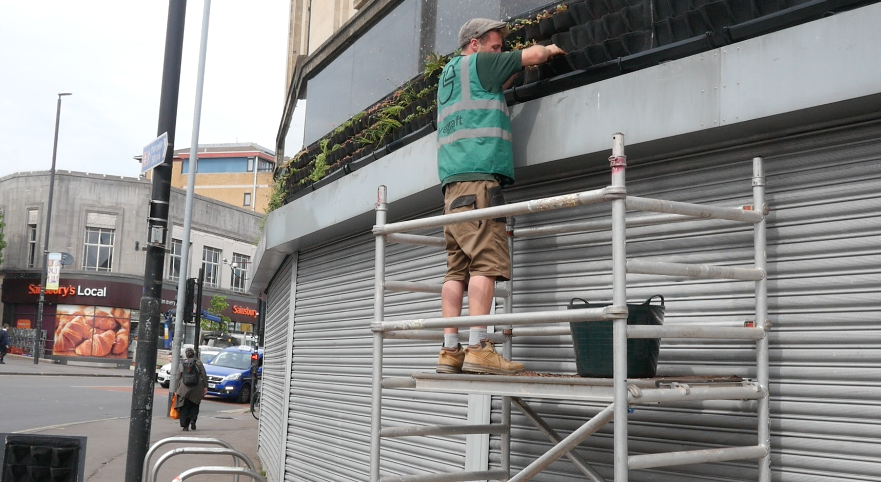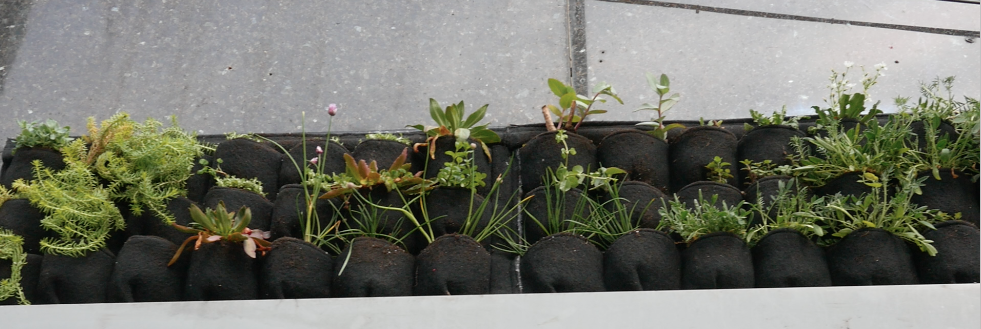Our living-wall is nearly 30 metres long, and has over 25 plant species, from bee-friendly wildflowers to native alpines and succulents. It improves local air quality, insulates the building, reduces noise pollution and provides food for our urban pollinators and also makes everyone smile as they walk past! It took weeks of careful planning, design and installation, but is now up and settling in
The Materials we used
The livingwall system is known as a phytotextile system and comprises 3 layers: the back layer is a waterproofing layer and is made from a blend of recycled plastics. The middle layer is the rooting layer, and is made from pasteurised mixed felts and natural fibres made from recycled post-consumer upholstery waste.
The front layer is a breathable 'phytotextile' made from a blend of mineral wool and plastic fibre, formed into small planting pockets. The phytotextile creates an ideal environment for plant growth. The textile is air and water porous, but has a fine enough structure to hold in sediment, fines and nutrients. The textile is UV stable, non-toxic, tear-resistant and acts as a support structure for the plants. The system is mounted to a plaswood batten support substructure. The plaswood we use is sourced from Swansea, and is made from 100% recycled agricultural plastics. It is rot-resistant, strong, robust and behaves the same as timber, but lasts a lot longer, and locks up carbon that would otherwise end up in landfill. We backfilled the void behind the substructure with reclaimed insulation from the fitout - this adds to the existing dynamic insulation value of the livingwall, helping keep the building warm in the winter, and cool in the summer. The system is carbon neutral upon installation, and will start sequestering further carbon from the first day of planting.
Irrigation
Water is automatically emitted into the irrigation layer via a system of emitter lines, which emit small, precise quantities of water directly into the rootzone of the plants. This maximises water efficiency and also prevents soil and nutrients from being washed out of the pockets. At present, for the livingwall to establish, we are using mains water, but will be installing rain water harvesting ongoing. The system will run for about 3 minutes, 3 times a day. The system will use approx 12 litres of water a day on average, with less in the winter, and more in the summer.
Plant species
The plant species used have been selected for air quality benefits, and also as best for pollinating insects. All the species used are adapted to low nutrient, shallow soils, and many are found naturally growing in crevices, cliff faces and hillsides, making them ideal for use in a livingwall system. There are around 600 plants in total. Around 300 are a mix of native wildflowers which are great for pollinating insects, these include species such as Ox Eye Daisy, Kidney Vetch, Creeping Jenny and Birdsfoot Trefoil. Around another 200 are native succulents from the family Sedum, which are typically found on livingroofs. These include Sedum reflexum, Sedum Alba, Sedum Spurium, Sedum Morganium, amongst others. The remaining 100 are a mix of a robust succulents and alpines which have been trialled on other projects across the UK. They are chosen because they are robust, have all year round interest and perform well at cleaning the air. From ongoing research, for maximum air quality remediation, the best approach is for maximum foliar diversity - that is to have lots of different types of leaf - grass-like, succulent, waxy, broadleaf - this is to maximise particulate capture as polluted air passes through the foliage. The substrate used is a reclaimed, recycled blend of expanded clay, perlite, crushed aggregate waste, soil, compost and horticultural grit. The system is inoculated with mycorrhizal fungus prior to planting, to ensure a robust network is established between beneficial microbes and fungi, and the root networks of the plants.
Lifespan.
The lifespan of the system moves in decimal places from the front (the plants) to the rear (the substructure) - most of the plants will live for around 10 years. The phytotextile fabric may continue to perform well for a 100 years, and the plaswood supports should have a lifespan of around 1000 years.


